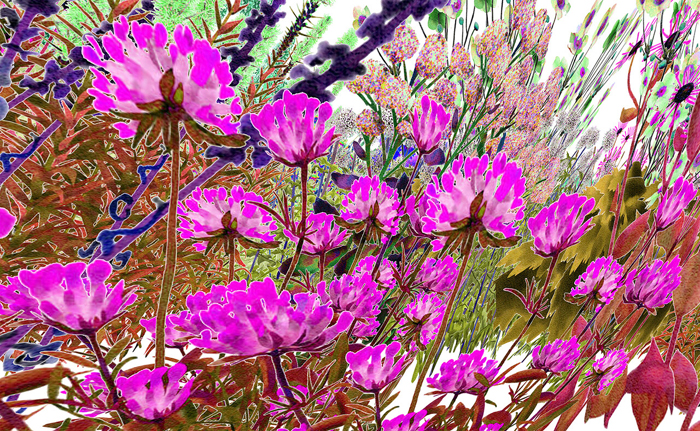Press Release
Without biodiversity, human existence on planet Earth would not be possible. However, this biodiversity has been declining for far too long, and at an alarming rate. This realisation unites the curatorial team of the Frankfurter Kunstverein, which has invited the Senckenberg Biodiversity and Climate Research Centre and Frankfurt Zoo to collaborate in the form of an interdisciplinary partnership. The result is the new exhibition titled Bending the Curve—Knowing, Acting, Caring for Biodiversity, which alludes to the concept of “Bending the Curve of Biodiversity Loss”. The exhibition explores how the negative trend can be halted—or even reversed. This issue is also the focus of the artistic and scientific perspectives presented in the exhibition, which illustrate paths and ideas for ecosystemic recovery and aim to catalyse a turnaround in the biodiversity crisis.

Bending the Curve - Knowing, Acting, Caring for Biodiversity
Kunstverein, Frankfurt-am-Main (Germany)
13.10.2023 - 03.03.2024

Pour Hosseini’s technique invokes the play of light in nature and its insistent elemental forces of water, fire and air, which have inspired the interior world and psyche throughout human history and spirituality. The solar cycle and reflections on water’s surface are recurring motifs, as well as light phenomena that occur when recording with analogue cameras, such as refraction and lens flare. Her new film installation The Magic Circle takes the crepuscular hours of dusk as its setting, allowing the dissolution of light to reveal the enchanting or ominous possibilities of nighttime. The film’s saturated and dreamlike palette, Olesya Zdorovetska’s unnerving layered vocal score, and Pour Hosseini’s installation of hanging chiffon fabric are lures into a mesmeric landscape, a dreamlike blurring of unconscious experience.
The Magic Circle portrays a foreboding character wearing veiled garments and a ceremonial headdress, enacting rituals associated with conjuring and magic. The sorceress, played by Yasaman Pishvaei, traces circles in the sand in front of a rolling seascape, and paces around a darkened interior illuminated by candlelight. These meditative actions appear to recreate purifying or protective spells. Pour Hosseini’s mastery of lighting, superimposition and the chemical alchemy of traditional film processing animate the spectral out-
The prevalence of witchcraft, its punishment and expulsion, align with the growth of misogynistic ideologies over many centuries. Prior to this time, priestesses, mediums, herbalists, healers, midwives, and other roles persecuted through the myth of witchcraft, were community members connected to nature and seasonal practices. Pour Hosseini’s The Magic Circle takes as its primary influence the 1886 painting of the same name by Pre-
Pour Hosseini challenges and repurposes this symbolism and suppressed power through her ‘radical capacity for conjuring a shadow vision of the world from a place of exile’. The final scenes of The Magic Circle show the sorceress tempering flames and observing the endless tidal movement of the sea from the shoreline within a circle of fire. Fire is the most ancient of magics and, along with art-
Franziska Nori (Co-
Both the artistic and scientific exhibits go beyond symbolic references. Instead, Bending the Curve showcases artists, research projects and initiatives whose work focuses on active transformation. What they present in the exhibition is born from the idea of co-
The exhibits and their creation demonstrate where a shift in thinking and action, as well as a new prioritisation of values, may lead to. Built upon the foundation of knowledge, action and care for biodiversity, as formulated in the sub-
The exhibition at Frankfurter Kunstverein draws inspiration from the project “ending the Curve of Biodiversity Loss” Behind it is concealed an international network led by Dr. David Leclèe, with 60 scientists and 46 institutions as members. Demonstrating that socio-
The Frankfurter Kunstverein sees itself as a cultural forum situated in the midst of society. Through the media of art and visual thinking, artists and experts from various fields engage in a public discourse with civil society actors, inspiring in this way political action.
Following the exhibitions Trees of Life—tories for a Damaged Planet, 2019, and The Intelligence of Plants, 2021, the Frankfurter Kunstverein with Bending the Curve continues its series of collaborations between contemporary artists and international natural science research institutions.
Participants: Alexandra Daisy Ginsberg, Fernando Laposse, Julia Lohmann, Maurizio Montalti, MYRIAD. Where we connect., Fraunhofer Institute for Applied Polymer Research IAP, Karlsruhe Institute of Technology, Faculty of Architecture, Max Planck Institute of Animal Behavior, Walter R. Tschinkel, Frankfurt Zoo
Co-
Co-
In collaboration with the Senckenberg Biodiversity and Climate Research Centre and Frankfurt Zoo
Alexandra Daisy Ginsberg, Pollinator Pathmaker: ARr77zvQW8Bq8q6hgDHUmp (Pollinator Vision, Late Summer), 2023. © Alexandra Daisy Ginsberg Ltd. Courtesy of Alexandra Daisy Ginsberg Ltd. Commissioned by Frankfurter Kunstverein.

Exhibition 13 October 2023 -

© ArtCatalyse International / Marika Prévosto 2023. All Rights Reserved